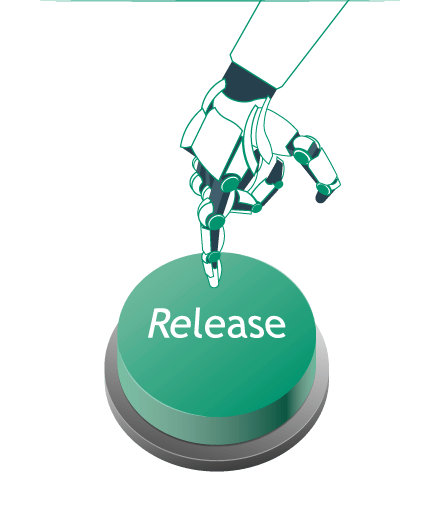
Since most services are online today, an hour of downtime may cost them thousands, sometimes millions of dollars. Whether it is because of an unexpected outage or planned post-release downtime, we can prevent it. Zero-downtime deployment approaches are designed to avoid IT disruptions while the service is being updated.
With the expertise on how to do a zero-downtime deployment, the development teams can update their products while still providing the services.
How many times have you seen this pop up from your bank: ‘Sorry, the service is temporarily unavailable’? Zero downtime and blue-green deployment approaches are specifically designed to prevent online services from downtime and, therefore, allow them to retain their customers.
The bigger the service, the more costly the update can be due to the interruption in its availability. By running identical production environments and simply pressing a button to switch from one environment to another, companies eliminate risks and maintain their reputation. This specifically concerns financial services, streaming platforms, and eCommerce projects.
Zero downtime deployment also ensures a quick and safe roll back to the previous version in case the new update is not functioning correctly.
The whole idea of ensuring blue-green deployments is maintaining two identical production environments — blue and green, often A and B. One of them is active — Blue — which means it receives all incoming requests and serves the production traffic. When you prepare a new version of your app or web service, you deploy it and conduct all tests on the idle environment — Green.
This is why A and B should be identical — to make sure that when you go live with your new version, nothing goes wrong. When ready, you switch the router to the Green environment. Now it’s active and processes 100% of the incoming traffic when the Blue one becomes idle. The zero-downtime deployment approach drastically reduces risk: if something goes wrong on a live environment, it only takes you a second to switch traffic back to the Blue and continue testing on Green.

At this point, you might be wondering what the difference between zero downtime deployment and blue-green is. It’s as simple as this:
Zero downtime deployment is an approach to implementation that includes several practices that have slight differences:
- Blue-Green Deployment. There are two identical environments: one is active, the other is idle. Testing of a new version is conducted on the idle one. It later becomes active after the tests are over. Contact us to learn how to implement blue-green deployment.
- Canary. It differs from the blue-green deployment by only one factor — you don’t switch 100% of the traffic to an idle environment. Instead, you roll out only 30% of traffic to a new version to test it, while the other 70% is still on the previous version.
- Rolling Deployment. When the new version is fully tested and ready for release, the instances are slowly, one by one, rolled out to the active environment. This minimizes the probability of system failure.
Apply for two complimentary expert hours and eliminate the risk of post-release downtime forever.
By having two environments where one is active, and the other is idle. All of the experiments and improvements are done on the idle environment, which is then tested, using the same parameters that are coming through the active environment. Only when the program in the idle environment passes the tests, can you then switch to the new version without traffic loss. More than 100 companies trust OpsWorks Co. with deployment strategies, you can too.
Rolling deployment is the best strategy as it is reliable in preventing downtime caused by updating services in your application. Even after the updated product is fully tested and ready for release, updates are rolled out in bits and pieces to the active environment, minimizing the risk of system failure.
Blue-green deployment is a process where two identical production environments are maintained. Only one environment is active at a time. For example, when blue is active, green will be in an idle position. The active environment will be the one that will be used to process all incoming requests, while the idle environment is a testing environment. When tests are done on the idle environment, the traffic is switched from blue to green.
The purpose of using this deployment strategy is that it eliminates downtime during software updates. The clients are automatically switched from the previous version to the upgraded one without interruption of the services they will be using. Also, with two production environments at hand, you will have some sort of redundancy system. So, if the new version malfunctions, incoming traffic can be switched to the older version without service loss.
Canary deployment is almost identical to the blue-green deployment strategy, in which there are two environments: a live and idle one. The only difference is that in canary deployment, only 30% of the traffic is moved to the new version while the rest is still in the older version. If the new version handles the 30%, then the rest is moved to the new version. It provides a double fail-safe system to make sure downtime does not occur.
The Kubernetes-based application allowed us to implement an autoscaling solution that prevented the infrastructure from failing at high traffic due to the load balancing.
Also, it ensured fault tolerance for better availability and, therefore, a positive user experience.































